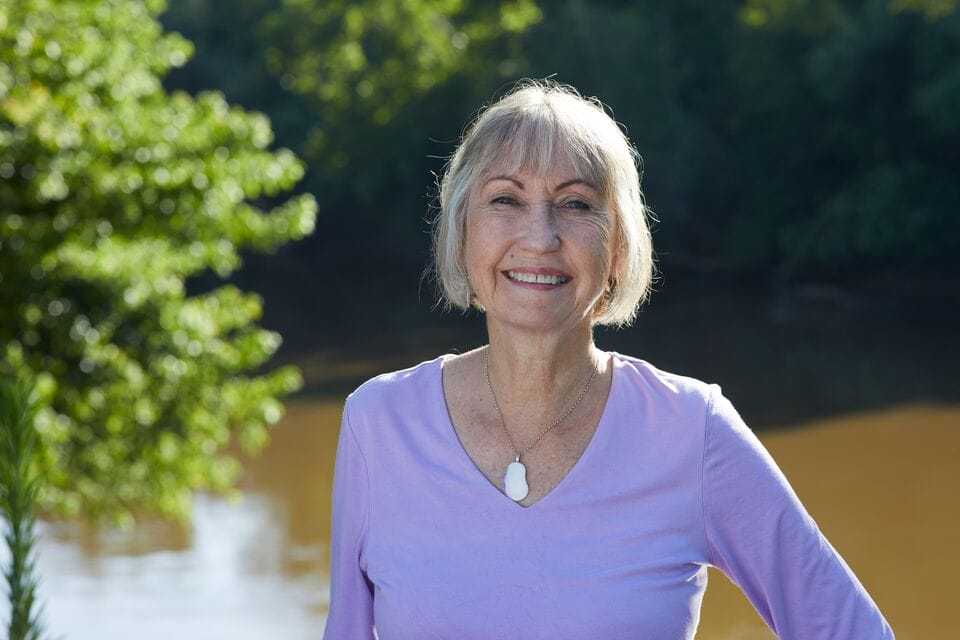When it comes to iconic urban design, spaces such as Vatican City’s St. Peter’s Square, New York’s Central Park, and Ryōanji garden in Kyoto claim top spots. But a great public space need not be contained within a few city blocks or even a city’s limits. In the case of the Chattahoochee RiverLands project, it can and does extend well beyond and between cities, so that residents in a much broader area benefit.
Spanning 100 miles from Buford Dam north of Atlanta to Chattahoochee Bend State Park, the Chattahoochee RiverLands is a network of greenways, a blueway (the river itself), tributary trails, and parks—all working together to connect people to the outdoors. When completed, it will link 19 cities and seven counties and include 42 water access points and eight proposed campsites. No wonder it’s on track to be Atlanta’s—and Georgia’s—defining public space for generations to come.
One-third of Americans, including 28 million children, lack safe, easy access to a park within a 10-minute walk of home. Urge your senators to allocate funding to create parks and enhance outdoor recreational opportunities by championing the Outdoors for All Act today!
The RiverLands is poised to improve access to nature for millions of Georgians, and it will ensure cleaner drinking water, improve flood control, and conserve wildlife habitat. But this project isn’t special just because it is massive and transformative.
This stretch of river is profoundly important as an everyday joy to those who helped shape it—and those who will enjoy it for years to come. It is through their eyes and experiences that the project’s scope and impact are best conveyed. These are a few of their stories and the outcomes they illustrate.
EQUITY HEALTH COMMUNITY INCLUSION
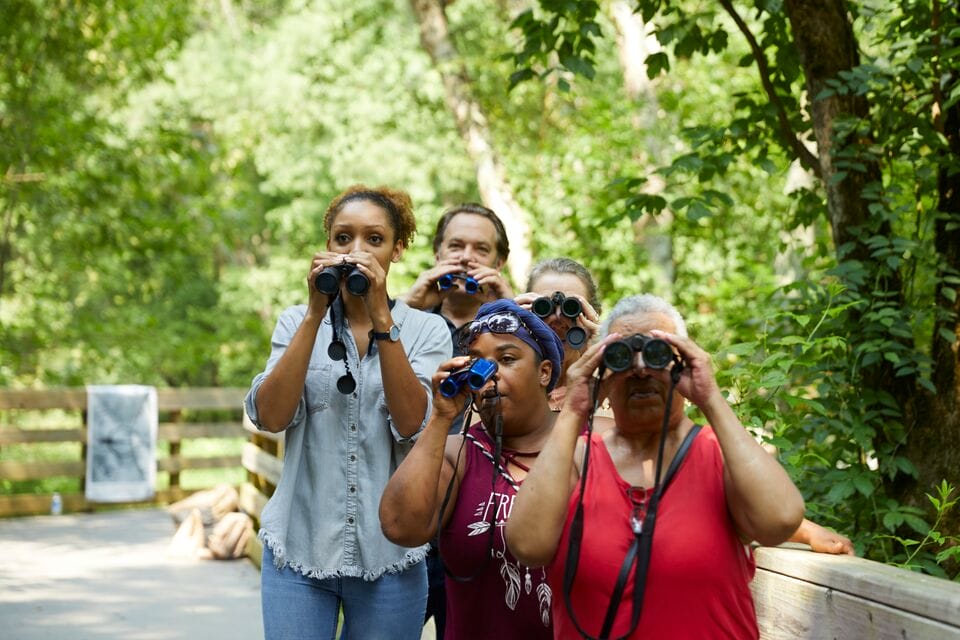
Equity
White-breasted nuthatches aren’t particularly rare along the banks of the Chattahoochee River, but it takes an attuned ear to identify one sight unseen. Corina Newsome has that rare skill, and she interrupts herself midsentence to appreciate the birdsong as she strolls with guests along a trail in Azalea Park.
Now an ornithologist and community engagement manager with Georgia Audubon, Newsome’s personal and professional connection to the Chattahoochee RiverLands might never have been.
She grew up in Philly’s decidedly unwild Germantown, and though she now proudly embraces the handle “hood_naturalist” on social media, Newsome says she once “subconsciously eliminated” the possibility of being a wildlife conservationist.
After all, you have to experience something to be inspired by—and aspire to—it. Representation is a form of experience, but it’s also something that’s too often missing in outdoor spaces. When she was young, Newsome didn’t see conservationists who looked like her.
Unfortunately, her early frame of reference isn’t unique. That’s why equitable access to the outdoors is so important, and why Trust for Public Land is working to open the Chattahoochee River to millions of people through the Chattahoochee RiverLands.
“[This] project is so exciting because it’s creating more equitable access to an incredible natural resource over a really long stretch of river,” says Newsome. “We need more of that.” Not only does it expose more people to the birds she loves and cultivate an appreciation for wildlife, but it’s also “just a beautiful and very scenic location to be, and I think it really increases emotional wellness.”
Newsome describes her work with Georgia Audubon as being “at the intersection of wildlife conservation and human experiences.” In practice, that means she shares birds with people as a way to connect them with the outdoors. And that means lots of trips to the Chattahoochee, especially during spring and fall migration periods when people come to experience the rush of biodiversity along the river.
“When it comes to access to nature, what we’ve seen across the country is a pattern of disenfranchisement, particularly when it comes to Black people, Indigenous people, people of color, [and] low-income communities,” she says. Thanks to the RiverLands project, the Chattahoochee is becoming accessible to people and communities previously cut off from it. “I’ve seen Black people, people of color, people representative of the diversity of communities in Atlanta and in Georgia—coming out and enjoying natural spaces,” she says, adding that it’s “incredibly encouraging.”
With our Chattahoochee RiverLands project, TPL is working to perpetuate that reality by involving everyone we can in project development and by hosting events to learn from residents. As TPL Georgia State Director George Dusenbury explains, “We spent two years visiting communities up and down the river and then digging really deeply…to draw them in, get their opinion, and have them tell us what they want the river to be.”
The goal is to create an outdoor space where everyone can see themselves, that is accessible to everyone, known about by everyone, and actually used and enjoyed by everyone.
“When you are locked in on a bird together with people you’ve never met in your life, next to someone you probably wouldn’t ordinarily consider reaching out to as a friend, and you are just geeking out over this bird that you’re seeing together, it builds community in a way that I honestly don’t think anything else can,” Newsome says. “All you’re thinking about is this common joy you have around the wildlife that you’re seeing.”
For Newsome, that joy begins with simply being in nature: “As an adult, I have come to realize how much there is to gain by having access to ecologically rich greenspaces and people who can connect you with the details you would have otherwise missed.”
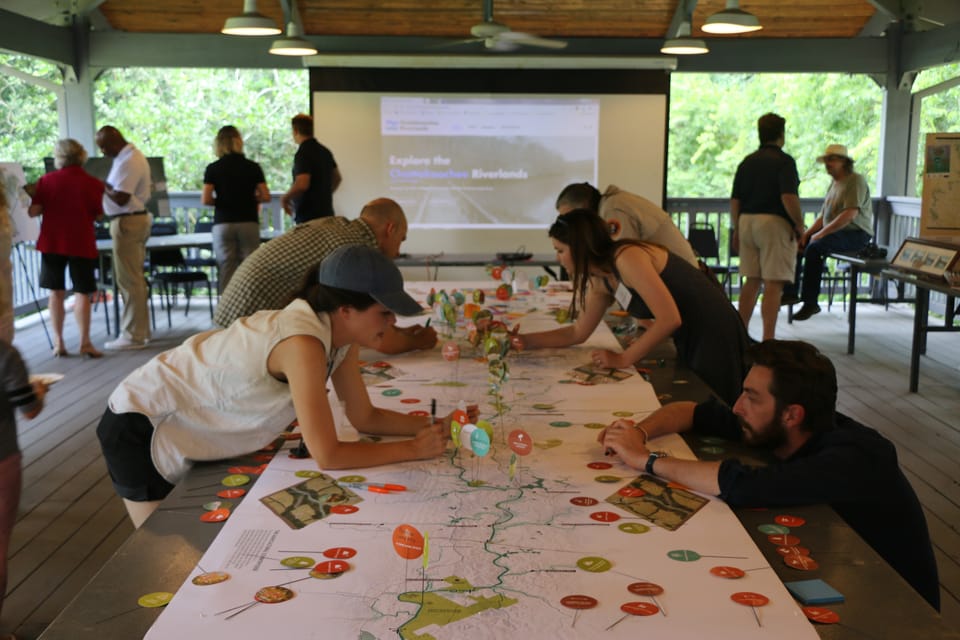
So much the better when some of those people look like you, something Corina knows firsthand. “I had really pictured wildlife science…as a white man’s domain,” she explains. “I never saw myself doing it.” But a visit to the Philadelphia Zoo when Newsome, a Black woman, was 17 years old altered her perception: she met a Black female zookeeper. “It changed the trajectory of my life.”
Simply seeing someone who looked like her, who she could relate to, gave Newsome, now 28, what she’d been missing: a reflection of herself in the conservation world. “It was in that moment that I realized how powerful representation is.”
Perhaps someday soon, on the banks of the Chattahoochee, a little boy or girl will join Corina in listening for the telltale yank, yank, yank of the nuthatch and find, for themselves, a whole new world of possibilities.
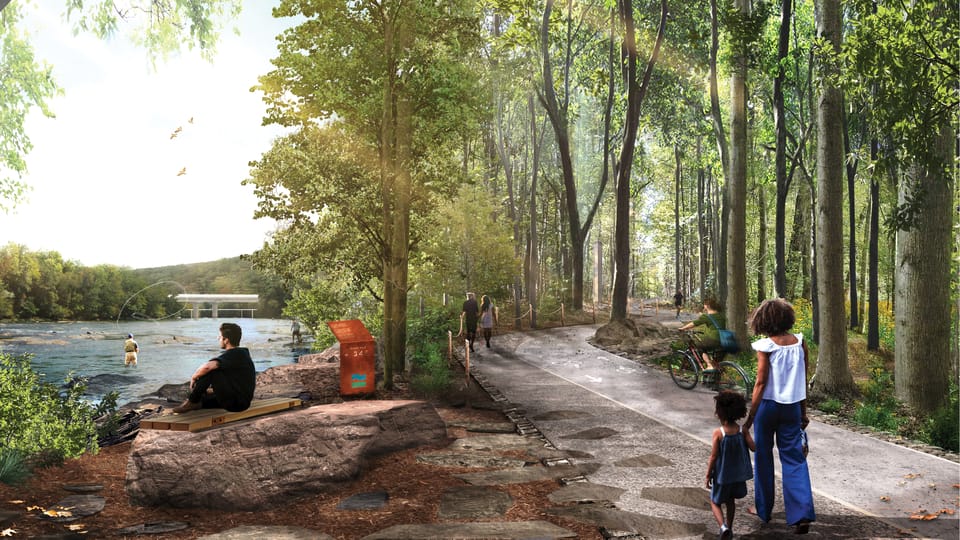
Health
Creating “the defining public space for the region and the state,” is a formidable task, but that is precisely what the Chattahoochee RiverLands will be when completed. What’s more, it will bring with it critical health benefits for the community, whether people come down to the river or not. Perhaps that’s why Georgia Trend magazine named George Dusenbury, Trust for Public Land’s Georgia state director, one of the state’s 100 most influential people.
A “green-blooded advocate for public parks and green spaces,” as the magazine described him, Dusenbury and TPL are community change agents dedicated to improving access to the outdoors—and the health benefits that come with that access—for people throughout Georgia and beyond.
“The time is now for the Chattahoochee RiverLands,” says Dusenbury. “We’ve already started to make it happen.” But he acknowledges it’s been a long process: “Over 30 years ago, TPL set out to preserve land along the Chattahoochee,” he says. “So far, we’ve preserved 18,000 acres and 80 miles of riverfront.”
He describes the project, simply, as “a huge vision.” He’s quick to note that an important aspect of its grandeur is the political support it’s received, from the governor and chambers of commerce to city and county officials. “We’re partnering with Cobb County, the Atlanta Regional Commission, and others to build the first two- to three-mile segment.”
It is a multigenerational undertaking, to be sure, but Dusenbury is encouraged by the prospect that residents will be able to enjoy some aspects as soon as two years from now.
One thing he’s particularly excited about? A camp-and-paddle trail is part of the plan, and it’s expected to open in 2024. “You’ll be able to spend four days and three nights paddling and camping through metro Atlanta, all the way from the city down to Macintosh Reserve and Carroll County,” he says enthusiastically.
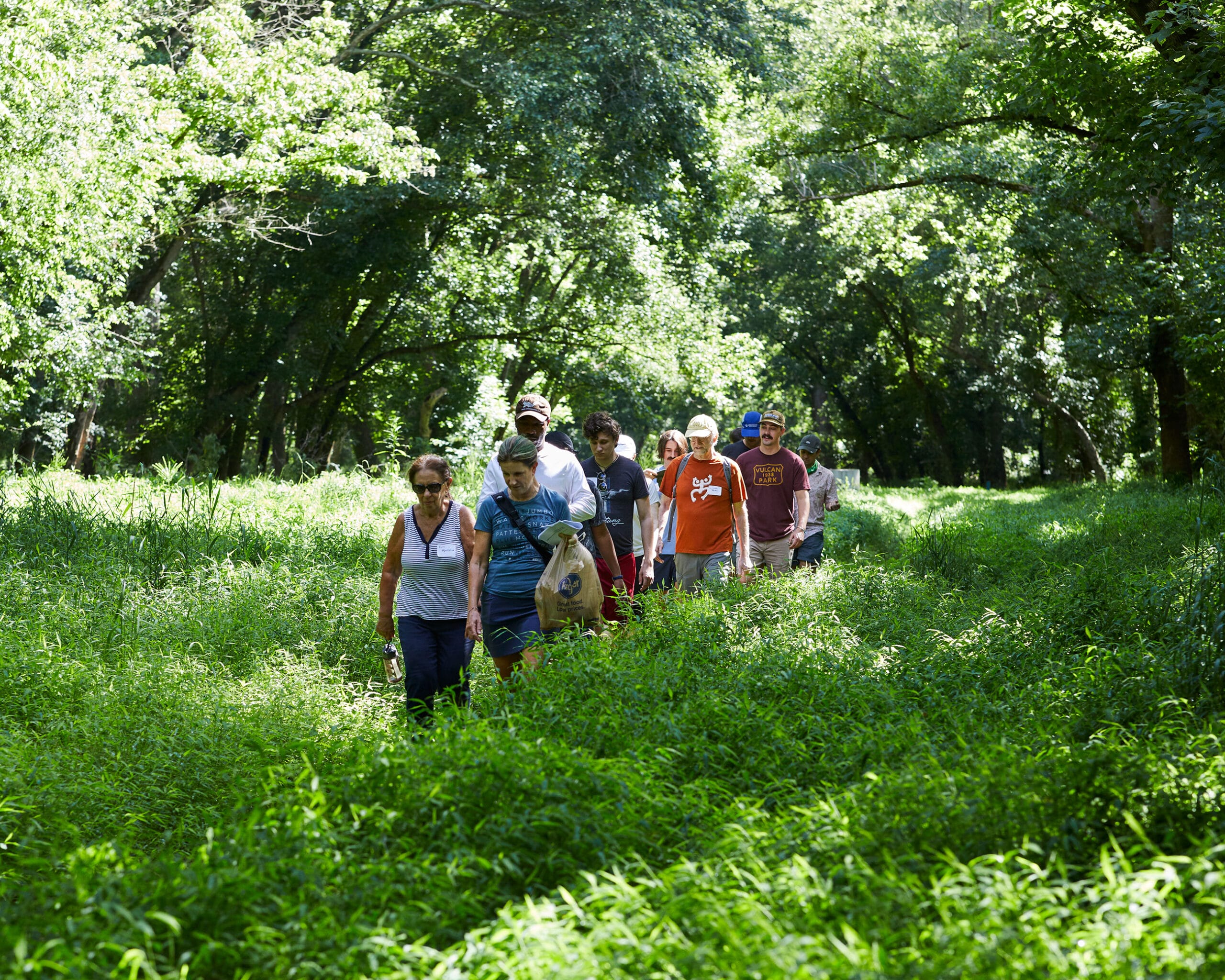
TPL Georgia State Director George Dusenbury
The health of residents is a major incentive driving the work. As TPL Director of Community Health Sadiya Muqueeth wrote in a 2021 TPL report, “Parks are widely recognized as critical for health and wellness, reducing anxiety, stress, and depression, and improving physical health.”
Dusenbury agrees, noting, “Throughout my life, I’ve always turned to being outdoors when I’m a little stressed, a little tired, a little worn out. What’s really great about the Chattahoochee RiverLands is recognizing that a lot of folks, when they feel that way, they don’t have a place to go. We’re building that special place for millions of people to go out and recharge their batteries, relax, and get refreshed and [ready] to seize the next day.”

Of course, to reap these critical benefits, residents have to know about and feel invested in the RiverLands, which is why TPL’s approach for this and all projects is participatory by design. “This is a big transformative project, and we need everybody on board,” explains Dusenbury.
Involving everyone is why Dusenbury believes “we’re going to be successful in this effort.” It’s that end game that gives TPL and Dusenbury purpose: “I’ve always wanted to make the world a little bit of a better place,” he says.
“The Chattahoochee RiverLands is not only going to change metropolitan Atlanta physically; it’s going to change it culturally. Suddenly people who were not even aware that we had a river in metro Atlanta will be saying, ‘Hey, I’ll meet you at the river.'”
Community
An outdoor place can’t bring wellness and offer the significant benefits of nature when it’s filthy. That’s where Sally Bethea comes in.
Now retired, Bethea founded Chattahoochee Riverkeeper, a nonprofit environmental advocacy organization, in 1994. “Chattahoochee Riverkeeper really is the voice for the health of the river,” says Bethea, a lifelong Atlanta resident.
Creatures that call the Chattahoochee home include blue herons and white-breasted nuthatches, southern leopard frogs, musk turtles, and brown and rainbow trout. Interesting plants grow there, too, such as pawpaws, which offer a fun educational opportunity for budding naturalists: crushed leaves smell like bell peppers, and the native tree’s fruit, which provides food for small mammals, tastes like bananas when ripe.
Bethea credits the RiverLands project and Trust for Public Land as major players in connecting many “separate little units” of river and green space. And when it comes to connectivity, Bethea knows the power of engagement; she’s seen, firsthand, how involvement with the river cultivates stewardship. “Every week, more than 100 individuals take water samples in their neighborhood creeks as part of our Neighborhood Water Watch program,” she says. The initiative, now 12 years old, “has found and resolved hundreds of pollution problems over the years.”
Chattahoochee Riverkeeper volunteers also help with river cleanup efforts, events, educational outreach, advocacy, and more. In all of these cases, community members take ownership in the place they’re helping to improve and preserve, and they often come back again and again.
TPL’s work building green spaces with communities has similarly shown that, when individuals have meaningful contact with each other and the land, they are more likely to get involved long term and take pride in their area. It may be surprising, but our community strategists have found that involvement is every bit as important as access.
Bethea remembers a time when parts of the Chattahoochee River were so polluted, “the state really urged people not to get close to it.” In fact, American Rivers named it the most endangered river in America as recently as 2016.
The good news, according to her, is that “local governments are finally placing value on the outdoors.” And thanks to partners such as Trust for Public Land, “There’s a vision and a motivation.” Bethea sees the Chattahoochee RiverLands as an investment in the future: “It’s an investment in people and their prosperity, happiness, and enjoyment,” she says. “It’s the most heavily used river in the state of Georgia, but it’s also, to me, one of the most beautiful.”
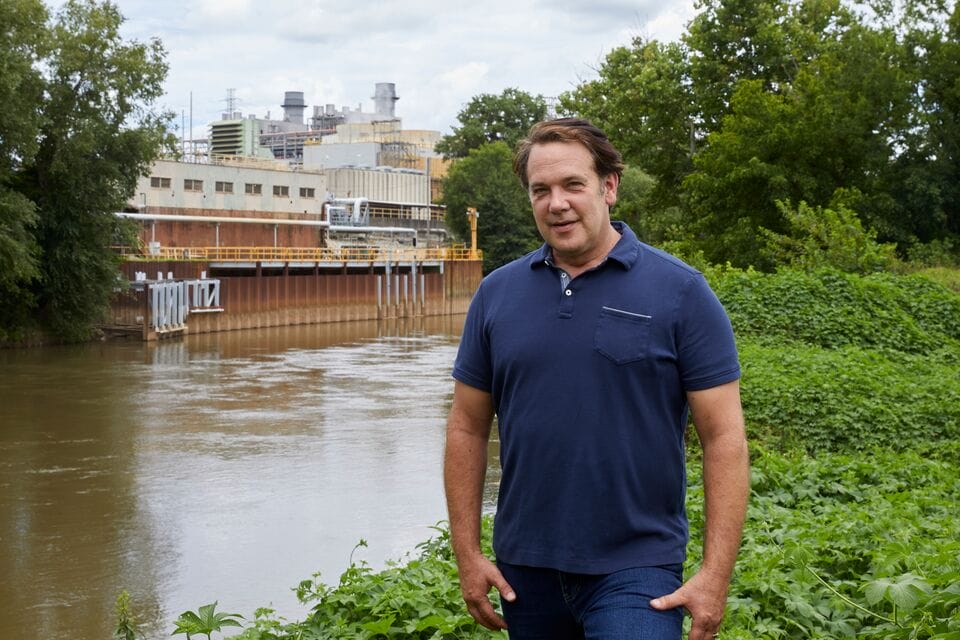
Inclusion
Walt Ray is a dreamer. He believes that if you can imagine something—even something as big, audacious, and intimidating as the Chattahoochee RiverLands—you can figure out how to achieve it. When it comes to making the RiverLands accessible, he’s considering all the things: how to get there, which transit hubs connect to which entry points, what to do with your car or bike while you’re on the river, even how to get back to your put-in if you’re floating “the ’Hooch.”
He’s so comprehensive because he’s been listening carefully to the community for over two years. “Learning what people want and what they don’t want is really the work that we do best,” says Ray, who serves as Chattahoochee program director at Trust for Public Land. “It’s about convening. We have a wide voice, not a narrow discussion.”
Meeting with residents of metropolitan Atlanta, he’s heard lots of great ideas. He harnesses them, refines them, and plans them into reality. This is where TPL is uniquely well positioned to lead. The reason is simple: experience. This is what TPL does; we bring different voices together so they are represented, in this case, as a “singular vision for the Chattahoochee RiverLands,” in Ray’s words.
For him, rivers are personal: “I grew up on the Allegheny River up in Pennsylvania.” Ray has memories of paddling, camping, and fishing. When he moved to Atlanta, he took to jogging along the Chattahoochee before work. “I’d be the first one out on the trail, and the fog is drifting over the water,” he recalls wistfully, “and it’s just me and the birds and the smell of that damp river that just brings you right back to home.”
The Chattahoochee RiverLands will stretch through areas many people call home—more than a million. Those residents are who Ray and other organizers have been listening to. “It can’t be Walt Ray’s RiverLands,” he explains. “It can’t be Trust for Public Land’s RiverLands. It’s got to be the Chattahoochee RiverLands.” It has to be a reflection of what its communities value and desire.
Top on that list is equity. “There are years of land-use patterns along the Chattahoochee River that determined who does and does not have access,” says Ray. Which is why engagement, fostered by events such as “River Rambles”—where locals gather at the river and talk about the project—are so key to doing things right. “We talk about a common ground for all,” he says, “regardless of your age, your background, your ability, to be welcome at the RiverLands.”
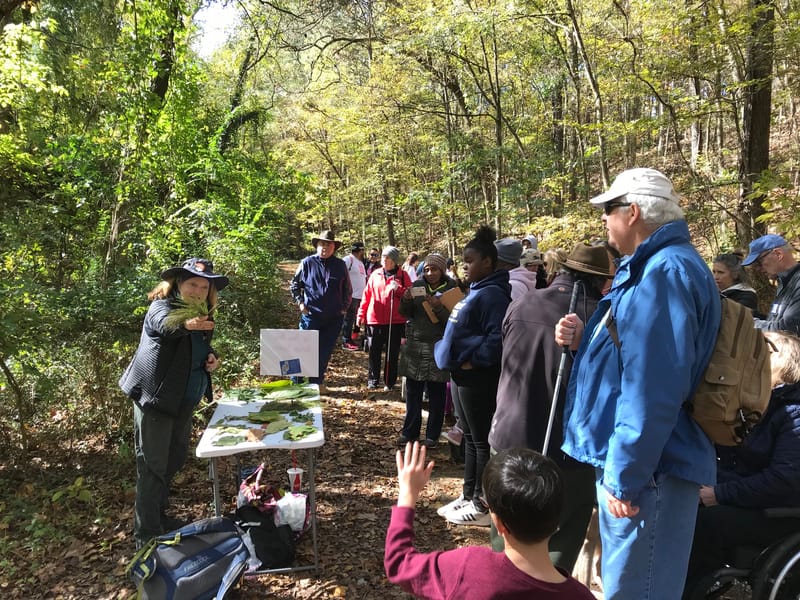
A River Ramble conducted in November 2019 focused on designing accessible trails and outdoor spaces for individuals with disabilities. Another invited students from Agape Youth and Family Center to raft the river; most had only been there once or twice before.
Ray describes River Rambles as an opportunity to interact with a very broad base of people from all kinds of backgrounds, to “collect their thoughts and their impressions” about the river—information that sharpens the project’s focus and directs TPL’s work.
That intake and synthesis of community feedback is why TPL is the ideal organization to lead this project. As Ray puts it, “We’re not really interested in making decisions for the region. We’re interested in facilitating the dialogues that result in those decisions, building consensus, and then finding the funds and resources to make it a reality.”
Feeling Inspired?
Help us make the Chattahoochee River a powerful catalyst to transform metro Atlanta.
Amy McCullough is senior writer and editor for Trust for Public Land and managing editor of Land&People magazine. She is also the author of The Box Wine Sailors, an adventure memoir.

Donate to become a member, and you’ll receive a subscription to Land&People magazine, our biannual publication featuring exclusive, inspiring stories about our work connecting everyone to the outdoors.



